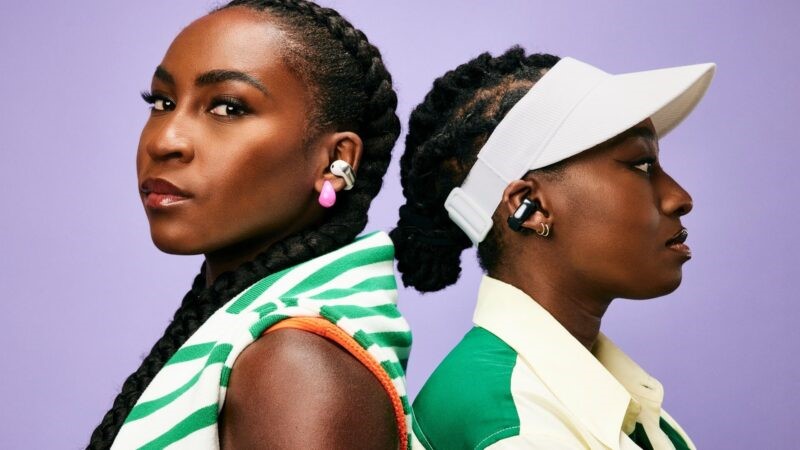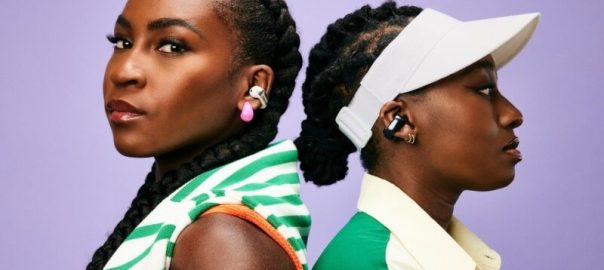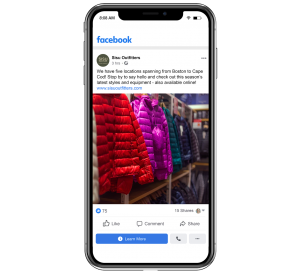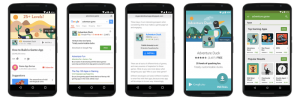Lessons from Coca-Cola, Procter & Gamble and Bose on keeping the consumer connection long after the games are over.

The 2024 Summer Olympics open in Paris on Friday. Gender parity was a stated goal, giving women athletes a bigger stage than ever before. In the U.S., sports fans will be watching all the competition, and much of this attention will be on the stars of women’s sports. What does this mean for marketers?
“The visibility is increasing,” said Tania Salarvand, EVP of hospitality and entertainment for digital innovation company Globant. “Some would argue slowly, but it’s definitely happening. A lot of it is about media coverage, and more fans watching through streaming. Brands have the ability to leverage social media and these brand activations in a digital way, and this has changed the dynamic.”
Connect sports to culture
With more visibility, women athletes are showcasing their star power in major brand campaigns, following in the footsteps of trailblazers like tennis legend, and four-time gold medalist, Serena Williams. Brands capitalizing on the success of exceptional athletes should acknowledge the broader cultural impact of women athletes on all of us. Doing this takes the sponsorship or campaign beyond a sports audience and connects with casual Olympics viewers’ passions.
A recent example is Bose’s new campaign starring American tennis star Coco Gauff. Before winning her first grand slam at last year’s U.S. Open, Gauff was already on the radar as a sports and fashion ambassador for GenZ. (In 2022, American Eagle drafted her to join them in the metaverse.)
Not only does Gauff show how the Bose Ultra Open Earbuds can conveniently play music during intense tennis rallies, but the spot also provides a cross-culture connection with a cameo by British rapper Little Simz. Gauff will compete in singles and doubles tennis in Paris and will serve as a USA flag-bearer in the opening ceremonies.
Similarly, the WNBA has seen a significant boost in consumer attention and fan attendance drawn by young stars like Caitlin Clark and Angel Reese. A lift in the magnitude of awareness leads to greater opportunities for tie-ins to music, fashion and other cultural interests. This doesn’t mean the potential wasn’t there to begin with.
“I was reading an article recently about fashion in the WNBA, which I think is ironic because it’s always been there,” said Salarvand. “But because the WNBA is starting to get more of a voice now, there’s a convergence with these players and brands.”
Think beyond national boundaries: Paris sponsors are
The brand sponsorship landscape is drastically different from the 2020 Tokyo Games (which took place in 2021 because of COVID-19). For that Olympics, 86% of the sponsors were Japanese brands. Local brands for this year’s Paris games are only 37% of sponsorships, according to sports and entertainment intelligence company SponsorUnited.
U.S.-based companies represent 41% of non-local sponsors in Paris. Procter & Gamble will activate over 30 brands through an exclusive partnership in the Personal Care and Household Products category. The partnership includes providing products and services in the Olympic Village, including products from Always and Tampax for the needs of women athletes. P&G brands will be leveraging social media to generate organic content by athletes and their fans throughout the Olympics, according to SponsorUnited.
The brand benefits of participating in the Olympics and other events featuring women athletes are overwhelming. Coca-Cola recently celebrated its involvement for nearly the entire history of the modern Olympics, and these efforts have led to the brand being the most-recognized sponsor in the U.S., according to brand tracking company Tracksuit.
However, association with the Olympics can be achieved without becoming an actual sponsor. Tracksuit found that Nike ranks second when respondents were asked to name an Olympic sponsor. The only problem is Nike isn’t a sponsor. Still, sponsoring women’s sports provides a measurable boost in brand preference.
“Ahead of and during last year’s 2023 Women’s World Cup in Australia & New Zealand, which drew record attendance for a women’s sporting event, Tracksuit…collected data from 4,000 Australian consumers to gauge their sentiment on the event,” said Connor Archbold, Tracksuit’s founder and co-CEO. “The data revealed that 42% of Australian consumers prefer brands supporting women’s sports over brands that do not, indicating substantial potential in this market. It also was a firm message to brands that it’s not just viewership that’s growing; audiences are showing a clear preference for brands that sponsor women’s sports.”
Projected Olympics viewership is split nearly evenly between men and women, according to Tracksuit — 48% men; 52% women.
Leverage digital channels to create unique fan experiences
Engaging sports fans in 2024 goes far beyond the site of the competition. For U.S. professional teams, most of their fans live outside of the home market, said Salarvand.
“Earlier, it was kind of about the on-site brand activations,” she said. “To engage these fans now, brands need to be able to leverage social media and these activations in a digital way.”
“Brands seeking to maximize impact during women’s sporting events like the Paris 2024 Olympics should lean on social media and social media partnerships as pivotal avenues,” said Archbold. “Women athletes typically have a 14% larger social media following than male athletes (according to the United Nations group UN Women), offering brands a powerful platform to connect with fans through co-branded content, campaigns and promotions. Strategic use of social media allows brands to boost engagement and drive awareness within a new segment of fans.”
Archbold added: “Combining traditional TV with digital content can help ensure a larger audience reach and higher engagement, maximizing the impact of marketing campaigns. Digital platforms offer interactive experiences and more personalized content delivery, catering to modern preferences for easier, on-demand and interactive engagement. Half of consumers watch event highlights and replays across digital platforms such as news channels, YouTube and TikTok, creating additional opportunities for brands to make a splash, especially given the time differences between the US and Paris.”
Bring Paris to U.S. fans
For the Paris Olympics, U.S. marketers should be thinking about ways to bring the sports experience stateside through pop-up experiences and watch parties, Salarvand said.
“Not all of us are going to be fortunate enough to go to all the events in Paris,” she said. “I love women’s gymnastics — it’s my absolute favorite — but I’ve never been to a women’s gymnastics event. How do we bring that here? Whether it’s through a local gymnasium, where you can create a kind of local event, or launching a pop-up activation…how do we create that experience here, live, for people who are mega-fans but don’t have the privilege to go to the event and still feel a part of the opportunity?”
Salarvand added: “Create something that is super unique to your brand with a message, your brand voice, a connection, but then makes it very accessible to the masses.”
Anchor brand sponsorships with core values and services
In addition to providing brands with technology to execute meaningful digital-first experiences, Globant also executes its sports-themed activations. For instance, it partnered with FIFA for the FIFA World Cup Qatar 2022 and FIFA Women’s Cup Australia and New Zealand 2023.
“From a brand perspective, it’s really been about, how do we create and activate our brand within that space and also bring to life some of our passions,” said Salarvand. “So, leveraging technology data and AI, we did a lot of live activations as well around ‘the perfect shot’ — how to mimic yourself against your favorite player and your ability to shoot a goal, for example.”
When creating a customized experience for sports fans, make sure to tie it back to your brand.
Listen to the fans and expand the conversation
Marketers should also consider how sports activations invite fans to share more about themselves. Brands should use these opportunities not only to grow engagement but also loyalty.
“There’s a lot of user-generated content that is pulling in people’s experiences and love for certain teams and certain athletes, so that’s something that’s taking over,” said Salarvand.
In addition to Globant’s FIFA sponsorships, the company partnered with the new home of the Los Angeles Clippers — Intuit Dome — opening this summer. Globant is rethinking the usual way fans are engaged by considering strategies that show deep interest in fans’ preferences.
“A lot of the working we’re doing is around ‘fan 360’ — how we fully understand fans, what they’re interested in, what they’re engaged in, and how we interact with them in new and different ways,” said Salarvand. “We’re doing quite a lot of mobile development to customize experiences depending on who the fan is, how often they come back to [a team’s home market] and actually engage physically, versus digital engagement. They may be buying gear, there’s a big ecommerce component to this. They might be interacting with Q&As with certain players. They might be engaging with teams on social media. And not just through likes, but there are a lot of fans creating their own content.”
Marketers should think about how deeply they engage sports fans to generate these customer insights. Leagues and sports teams are doing it. And brands will have the opportunity to engage fans in the same way as they root for athletes, in Paris and afar, during the Olympics.
The post How marketers are leveraging Olympics’ focus on women’s sports to drive engagement appeared first on MarTech.
(12)
Report Post







